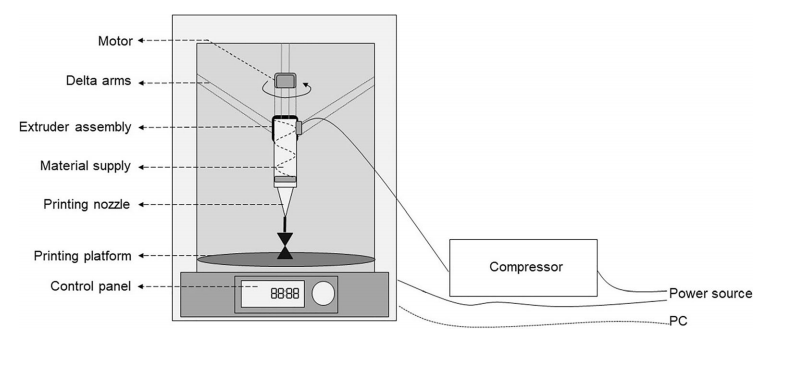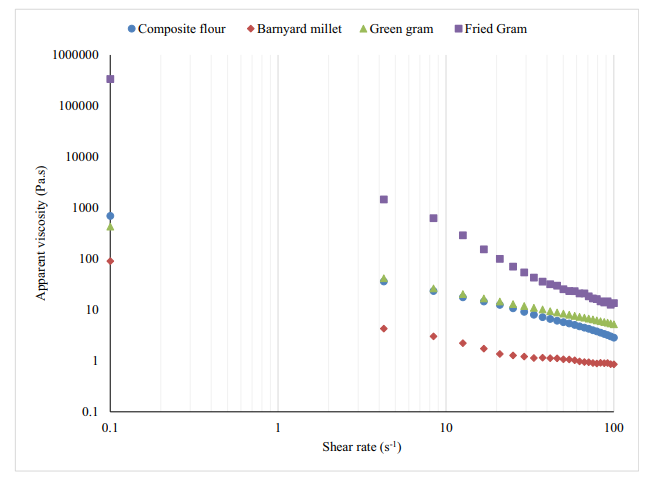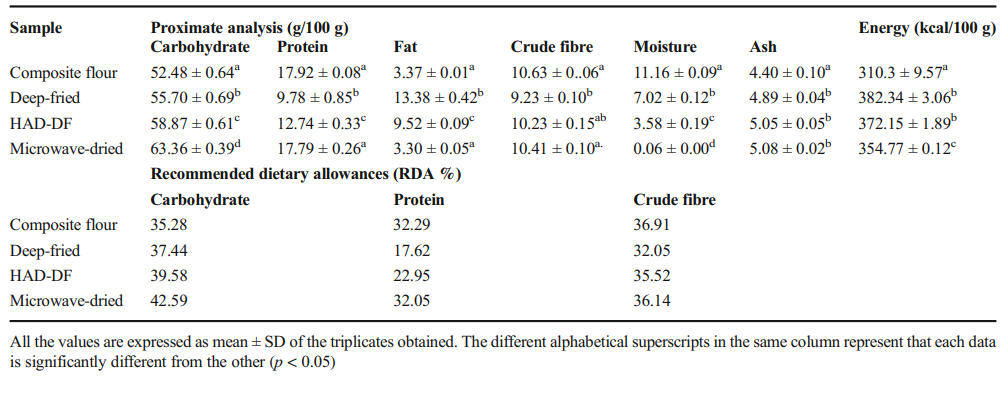Researchers from the Computational Modeling and Nanoscale Processing Unit, Indian Institute of Food Processing Technology (IIFPT), Ministry of Food Processing Industries, Govt. of India, Thanjavur, Tamil Nadu, India, have released details from a recent study in “3D Extrusion Printing and Post-Processing of Fiber-Rich Snack from Indigenous Composite Flour.”
3D printing with food tends to be a source of interest—and curiosity—for many users and 3D printing enthusiasts wondering what delicacies can be served up via digital fabrication. In new research, scientists focused on the potential for 3D printing healthy snacks from high-fiber, high-protein flour made from a variety of ingredients, to include millet and seeds.
Just as medical treatment can be made patient-specific with 3D printed implants or devices—or cars can be customized to the fit of the owner—3D-printed food can offer personalized nutrition, flexibility in choices, affordability in production, and less waste. Volume can be increased or decreased, depending on the number of print heads or nozzles, and printers may take up little space in some cases.
Researchers have conducted numerous studies, from printing egg whites with additives like gelatin, starch, and sucrose, to pureeing potatoes, fabricating brown rice, and much more. For this study, raw materials were purchased from a local market:
- Green gram (Vigna radiata)
- Fried gram (Cicer arietinum)
- Barnyard millet (Echinochloa frumentacae)
- Ajwain seeds (Trachyspermum ammi)
“Red chili powder and table salt were added to the composite flour for taste. The composite flour was then mixed with distilled water (1.2:1 wt. ratio) and made into a paste,” explained the researchers.

Schematic representation of the food 3D printer CARK used in this study (Source: Anukiruthika et al. 2019).
A CARK (controlled additive manufacturing robotic kit) 3D printer was used in the study, and samples then experienced a more unique type of post-processing than we usually see in 3D printing, as they were deep fried, hot air dried and then deep fried, as well as microwave dried—with each exercise performed three times. Twenty participants agreed to assess the samples (using a nine-point scale) on color, texture, taste, flavor, smell, and “overall acceptability.”
Nozzle diameter was responsible for “significant influence” over the structure and appearance of samples, with three different sizes in use: 1.28, 0.84, and 0.33 mm.
“Nozzle with a diameter of 1.28 mm resulted in higher flow rate and larger layer area, in turn, decreasing the resolution of print layers. The 0.84-mm nozzle yielded comparatively less flow rate and layer size, resulting in better shape resolution,” said the authors. “There was no extrusion of the material supply through the 0.33-mm nozzle; pressure given was insufficient. It was concluded that extrusion through smaller nozzle diameter requires more air pressure (> 4 bar) to force out the material supply.”
“The suggested printing condition for extrusion-based 3D printing of any food material is that the nozzle (layer) height should be equal to the nozzle diameter,” explained the authors. “Under such condition, the desired shape was not attained because of the lack of adhesion between the pre-deposited layer and the layer being printed.”
With a layer height of 75 percent, however, shape was maintained without any threat to stability.
Ultimately, the researchers used the following parameters:
- Nozzle diameter, 0.83 mm
- Layer height, 0.62 mm
- Printing speed, 2400 mm/min
- Extrusion motor speed, 300 rpm
“The 3D-printed snack developed with the optimized set of 3D printing parameters has an appealing appearance with high overall acceptability. Post-processing of the 3D-printed snacks resulted in structural changes in the 3D-printed food. Microwaved samples absolutely resembled the unprocessed samples in appearance. HAD-DF sample had higher sensorial acceptance, in spite of its hardness and dark color,” concluded the researchers.
“With proximate analysis of the end product, the snack was confirmed to possess high protein and fiber content. Therefore, the formulated snack can be consumed regularly to complement to daily dietary needs. Thus, the 3D food printing being an incipient technology proves to be promising in providing customized and nutritious food.”

All the values are expressed as mean ± SD of the triplicates obtained. The different alphabetical superscripts in the same row represent that each data is
significantly different from the other (p < 0.05)
What do you think of this news? Let us know your thoughts! Join the discussion of this and other 3D printing topics at 3DPrintBoard.com.
[Source / Images: ‘3D Extrusion Printing and Post-Processing of Fiber-Rich Snack from Indigenous Composite Flour’]Subscribe to Our Email Newsletter
Stay up-to-date on all the latest news from the 3D printing industry and receive information and offers from third party vendors.
Print Services
Upload your 3D Models and get them printed quickly and efficiently.
You May Also Like
3D Printing News Briefs, July 2, 2025: Copper Alloys, Defense Manufacturing, & More
We’re starting off with metals in today’s 3D Printing News Briefs, as Farsoon has unveiled a large-scale AM solution for copper alloys, and Meltio used its wire-laser metal solution to...
3DPOD 260: John Hart on VulcanForms, MIT, Desktop Metal and More
John Hart is a Professor at MIT; he´s also the director of the Laboratory for Manufacturing and Productivity as well as the director of the Center for Advanced Production Technologies....
3D Printing News Briefs, June 28, 2025: Defense Accelerator, Surgical Models, & More
In this weekend’s 3D Printing News Briefs, 3YOURMIND was selected to join an EU Defense Accelerator, and PTC has announced model-based definition (MBD) capabilities within Onshape. Finally, a study out...
EOS in India: AM’s Rising Star
EOS is doubling down on India. With a growing base of aerospace startups, new government policies, and a massive engineering workforce, India is quickly becoming one of the most important...






































